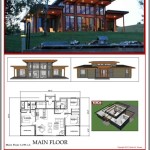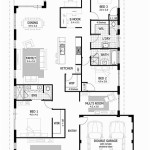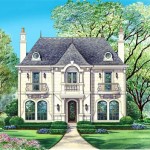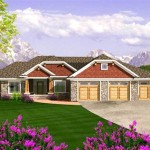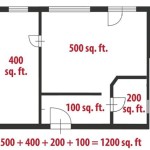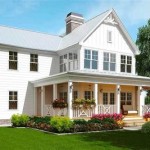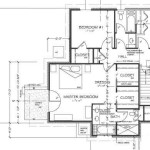Tiny Timber Frame House Plans: A Comprehensive Guide
The allure of tiny living continues to grow, driven by desires for financial freedom, environmental consciousness, and a simplified lifestyle. Within the realm of tiny home construction, timber framing stands out as a durable, aesthetically pleasing, and structurally sound option. Tiny timber frame house plans offer a unique blend of traditional craftsmanship and modern living, creating compact yet comfortable dwellings. This article provides a detailed exploration of tiny timber frame house plans, covering design considerations, structural aspects, material choices, and the overall benefits of this building approach.
Understanding Timber Framing for Tiny Homes
Timber framing, at its core, is a building method that utilizes heavy timbers joined together with mortise and tenon joints, pegs, and other traditional techniques to create a strong and self-supporting frame. Unlike conventional stick-built construction, where the frame is hidden behind drywall and insulation, timber frames are often exposed, adding a distinctive visual character to the interior and exterior of the house. In the context of tiny homes, timber framing offers several advantages. Its inherent strength allows for larger window openings and open floor plans. The beauty of the wood adds a natural warmth and elegance, making it a desirable aesthetic choice. Furthermore, the durability of timber frames ensures a long-lasting structure, capable of withstanding various weather conditions.
The fundamental difference between timber framing and post-and-beam construction is often subtle but important. While both use heavy timbers, timber framing emphasizes complex joinery and a self-supporting frame, distributing loads effectively. Post-and-beam construction may rely more on metal fasteners and sometimes incorporate additional framing elements for reinforcement. For tiny homes, the choice between the two often depends on the desired aesthetic, the level of craftsmanship desired, and budgetary considerations.
Planning a tiny timber frame home necessitates careful consideration of several factors. First and foremost, a thorough understanding of local building codes and zoning regulations is essential. Tiny homes, particularly those on wheels, may face specific restrictions regarding size, placement, and utility connections. Consulting with local authorities early in the planning process can prevent potential setbacks and ensure compliance. Secondly, the site itself plays a crucial role in the design. Factors such as topography, soil conditions, access to utilities, and prevailing winds should influence the orientation and layout of the house. A well-oriented home can maximize natural light and ventilation, reducing reliance on artificial lighting and heating/cooling systems. Finally, a detailed budget should be established, accounting for materials, labor, permits, and potential unforeseen expenses. Timber framing, while durable, can be more expensive than conventional construction due to the skilled labor required and the cost of high-quality timbers.
Key Design Considerations for Tiny Timber Frame House Plans
Designing a tiny timber frame house requires a thoughtful approach that balances functionality, aesthetics, and structural integrity. The limited square footage demands efficient use of space and careful planning of layout. Open floor plans are commonly employed to maximize the feeling of spaciousness, while multi-functional furniture and clever storage solutions help minimize clutter. Vertical space is often utilized to create lofts for sleeping or storage, effectively expanding the usable area of the home.
The placement of windows and doors is critical in a tiny home. Large windows can bring in ample natural light and offer panoramic views, blurring the lines between indoor and outdoor living. Strategically positioned windows can also promote cross-ventilation, reducing the need for air conditioning. Doors should be carefully placed to minimize obstruction and maximize usable space. Sliding doors or pocket doors can be particularly effective in tight spaces.
Interior design plays a significant role in creating a comfortable and inviting tiny home. Light colors and natural materials can create a sense of spaciousness and warmth. Built-in storage solutions, such as shelves, drawers, and hidden compartments, can help keep the home organized and clutter-free. The choice of appliances and fixtures should also be carefully considered, opting for compact and energy-efficient models. A well-designed interior can make a tiny home feel much larger and more livable.
The timber frame itself becomes an integral part of the interior design. The exposed timbers create a visually appealing structure that adds character and warmth to the space. The timbers can be stained or left natural, depending on the desired aesthetic. The joinery details, such as mortise and tenon joints and wooden pegs, become decorative elements in their own right. Integrating the timber frame into the overall design is essential for creating a cohesive and harmonious living space.
Structural Aspects and Material Selection
The structural integrity of a tiny timber frame house is paramount. The timber frame must be designed to withstand various loads, including snow loads, wind loads, and seismic forces. An experienced structural engineer should be consulted to ensure that the frame is adequately sized and braced. The joinery details must be carefully executed to ensure that the timbers are securely connected and that the loads are properly distributed.
The selection of appropriate timber species is crucial for the durability and longevity of the frame. Hardwoods, such as oak, maple, and hickory, are known for their strength and resistance to decay. Softwoods, such as pine, fir, and cedar, are lighter and easier to work with but may require additional treatment to protect against decay and insect infestation. The choice of timber species should be based on local availability, cost, and the desired aesthetic.
The infill panels between the timbers can be constructed from a variety of materials, including straw bale, structural insulated panels (SIPs), and conventional stud framing. Straw bale infill offers excellent insulation and a natural, sustainable building material. SIPs provide a high level of insulation and are relatively easy to install. Conventional stud framing is a more traditional option but may require additional insulation to meet energy efficiency standards. The choice of infill material should be based on factors such as cost, insulation value, ease of installation, and aesthetic considerations.
Proper insulation is essential for creating a comfortable and energy-efficient tiny home. In addition to the infill panels, insulation should be installed in the roof and floor. A variety of insulation materials are available, including fiberglass, cellulose, spray foam, and mineral wool. The choice of insulation material should be based on its R-value (resistance to heat flow), cost, and environmental impact. Adequate ventilation is also crucial for preventing moisture buildup and maintaining indoor air quality.
The foundation of a tiny timber frame house can be either permanent or mobile. Permanent foundations, such as concrete slabs or pier foundations, require building permits and adherence to local building codes. Mobile foundations, such as trailers, offer greater flexibility and may be subject to less stringent regulations. The choice of foundation should be based on the intended use of the house and local regulations.
Benefits of Choosing Tiny Timber Frame Construction
Opting for tiny timber frame construction presents a multitude of advantages, spanning both practical and aesthetic realms. The inherent strength and durability of timber framing translate to a long-lasting structure, capable of withstanding the rigors of time and weather. The exposed timbers contribute a unique aesthetic appeal, infusing the tiny home with warmth, character, and a touch of rustic elegance.
Environmental sustainability is another compelling benefit. Timber, as a renewable resource, offers a more environmentally friendly alternative to conventional building materials like concrete and steel. Timber framing often involves locally sourced materials, reducing transportation costs and supporting local economies. The use of natural infill materials, such as straw bale, further enhances the sustainability of the construction.
Energy efficiency is also a significant advantage. The thick walls and well-insulated infill panels of a timber frame house provide excellent thermal performance, reducing energy consumption for heating and cooling. The use of natural materials, such as wood and straw, helps regulate humidity and maintain a comfortable indoor environment. The passive solar design principles can be readily incorporated into the design, further minimizing energy consumption.
The flexibility of timber frame design allows for customization and adaptation to meet individual needs and preferences. The open floor plans and large window openings create a sense of spaciousness and connection to the outdoors. The timber frame can be designed to accommodate a variety of architectural styles, from traditional to contemporary. The use of natural materials and finishes creates a healthy and inviting living environment.
Finally, the emotional connection to a handcrafted home is a significant benefit for many owners. The process of building a timber frame house, whether done by oneself or with the help of skilled craftspeople, is a rewarding experience. The resulting home is a unique and personal expression of craftsmanship and artistry, creating a sense of pride and ownership.

Tiny Timber Frame Houses House Blog

14 X 16 Tiny Timber Frame Cabin Black Dog Timberworks

12 16 Tiny Timber Frame House Hq

Timber Frame Tiny House Plan Bundle Hq

Cabin W Porch Timber Frame Tiny House Homes

Chelwood Cabin Timber Frame Plans 695sqft Streamline Design

Purcell Timber Frames The Precrafted Home Company House Plans Tiny Cabin

1216 Tiny Timber Frame House Plan Israel

1216 Tiny Timber Frame House Plan Israel

Small Homes Timber Frame Hq
Related Posts


